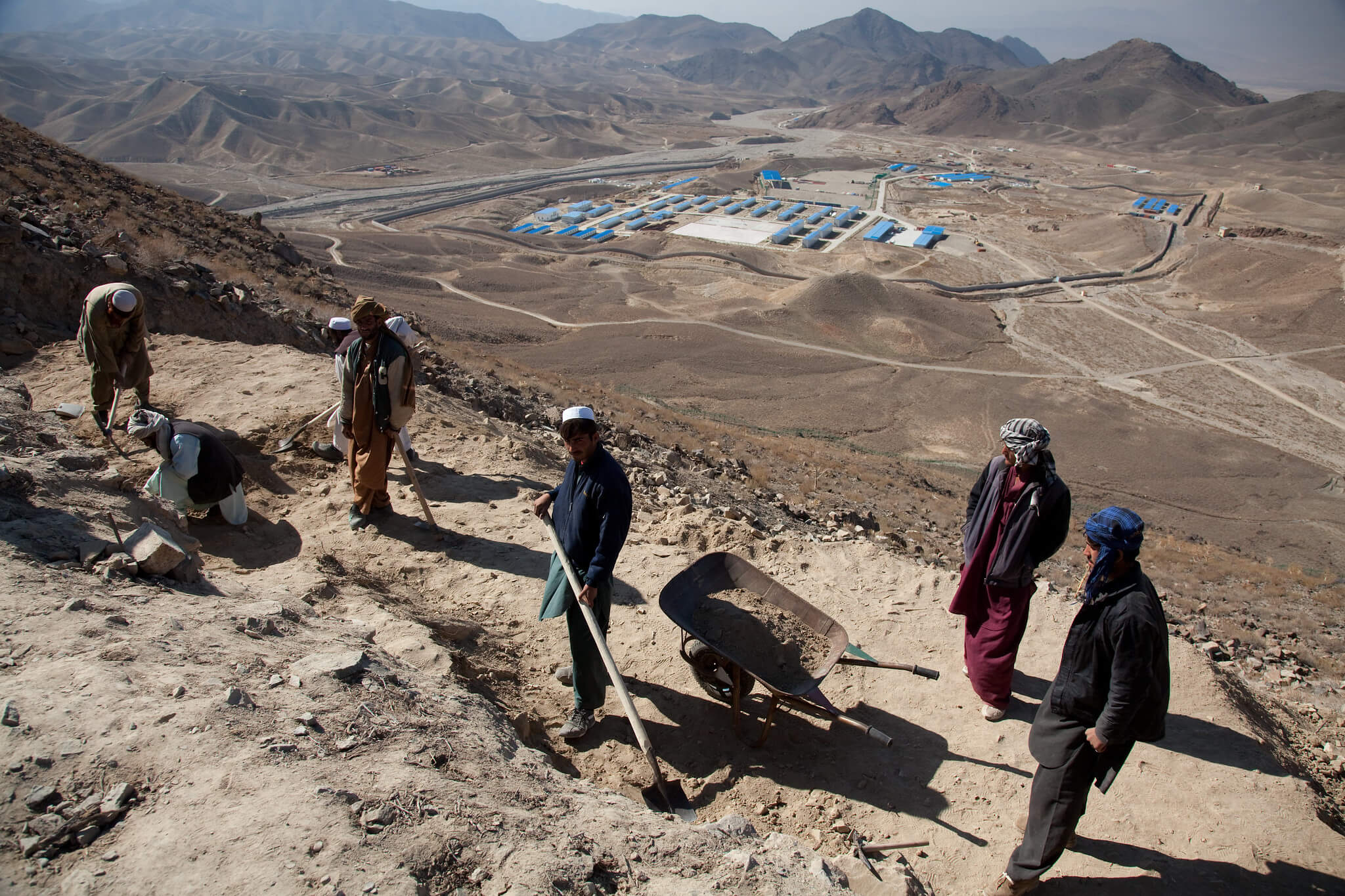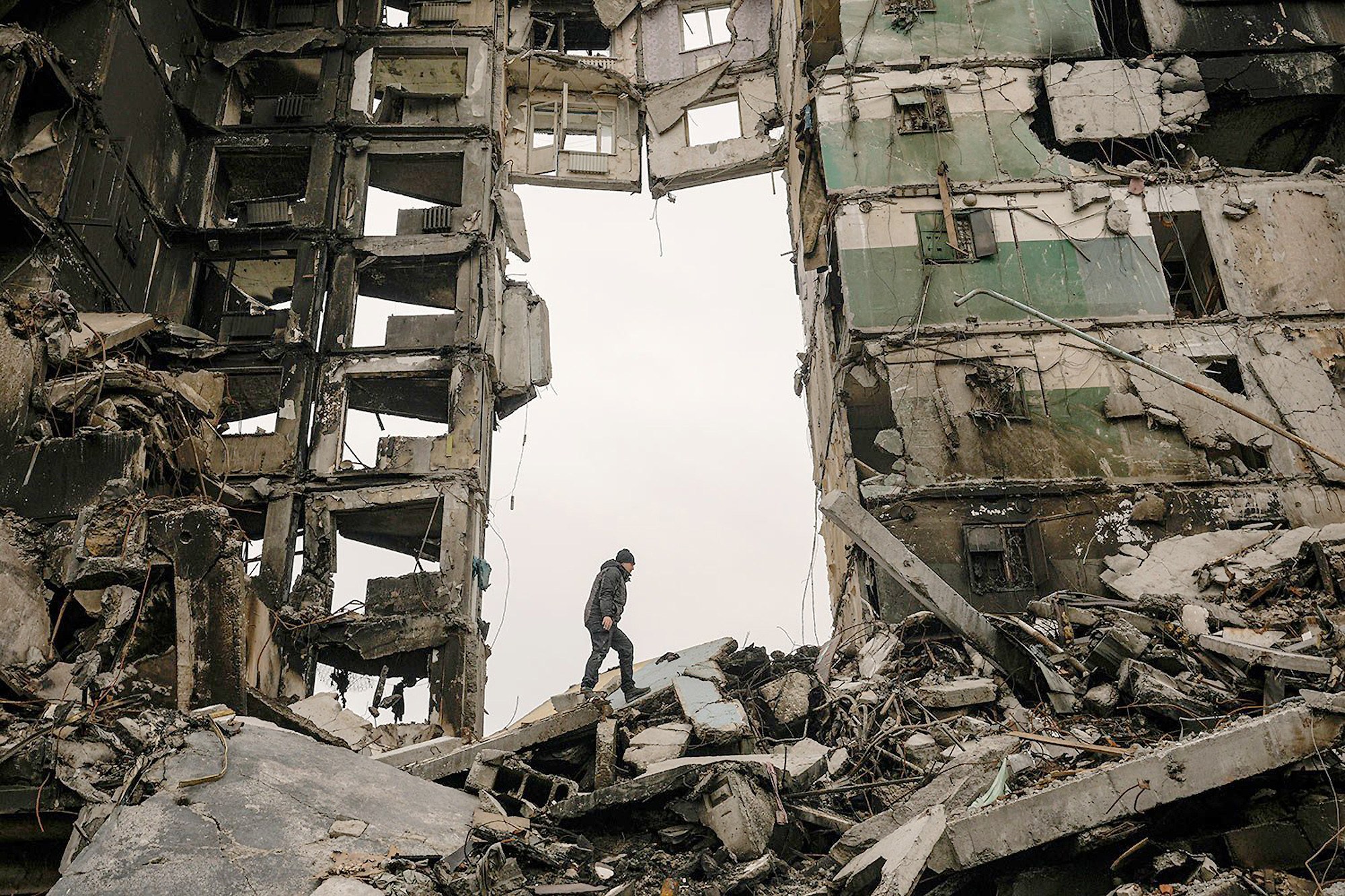Afghanistan’s Critical Minerals Aren’t a Great Investment
Geographic and geopolitical obstacles, deficient financial and legal infrastructure, and other impediments make Western exploitation unwise.

Published by The Lawfare Institute
in Cooperation With

For decades, Afghanistan’s mineral resources—estimated to be worth upward of $1 trillion—have interested the U.S. and other foreign powers. Afghan minerals have sometimes been billed as a potential geopolitical and economic justification for continued U.S. military engagement, as a source of money to pay for the cost of Afghan security forces, and even as a way to subsidize foreign private security forces to replace U.S. troops. None of these ideas, frequently criticized as impractical, have panned out.
Recently, the emphasis on “critical minerals” and the U.S. critical minerals strategy has revived some interest in Afghanistan as a potential source of strategic minerals. The Taliban authorities have signaled readiness for Western and U.S. investments in such resources, even as they have issued large numbers of mining contracts to Chinese and other companies.
However, Afghanistan is unlikely to become a high-priority country for major U.S. or other Western investments in extraction of critical minerals. It lacks a strategic advantage in comparison with other mineral-rich countries. Though the country has massive estimated (and some proven) solid mineral reserves, the obstacles to large-scale exploitation are daunting. There are logistical impediments that make most profitable large-scale mining operations implausible. Energy, transport, and other infrastructure present severe bottlenecks, and water—required for processing many minerals—is the country’s scarcest resource. As a low-income country with limited funds and weak institutions, Afghanistan is especially poorly equipped to deal with the serious environmental fallout associated with mining operations. And as a landlocked country, Afghanistan faces higher transport costs and more obstacles than countries closer to the main areas of demand or with access to the sea.
Additionally, there are structural impediments that discourage mining operations. The legal framework in Afghanistan is rudimentary and does not give international mining companies confidence. Afghanistan’s financial isolation from international banks and normal transactions in the wake of the 2021 Taliban takeover means that moving large amounts of money for major mining investments and their profits would be difficult. Finally, the Taliban’s reputational toxicity internationally—due to their draconian restrictions against women and girls and other human rights abuses—means that Western mining companies risk aggravating their shareholders if they choose to invest in Afghanistan.
Why the Strategic Emphasis on Critical Minerals?
Critical minerals are defined as nonfuel (that is, solid mineral) resources that are essential for U.S. national security (for example, as inputs for high-tech weaponry), key economic uses (for example, for information technology hardware), and/or green energy. These resources, by definition, face considerable supply chain vulnerabilities. As elaborated by the Congressional Research Service:
For example, silicon is essential for manufacturing computer chips; lithium is essential for manufacturing batteries; and rare earth elements are essential for manufacturing magnets, batteries, phosphors, and catalysts used in such products as wind turbines, electric vehicles, screens/touchscreens, and petroleum refining. Demand for these components in the health care, transportation, power generation, consumer electronics, defense, and refining and manufacturing sectors is projected to grow in the next decade, likely leading to increased demand for critical mineral resources.
Since 2020, the U.S. government has been developing a strategy to “ensure secure and reliable supplies of critical minerals.” The United States Geological Survey (USGS) in 2022 designated 50 critical minerals (plus a category “rare earth elements”—REEs), while the Department of Energy in 2023 designated 18 other “critical materials” for energy, resulting in a total of more than 68.
Critical minerals by definition are not extracted at sufficient scale in the United States, and in some cases, such as with REEs and lithium, U.S. production has declined over time. Often current production is concentrated in the territory of geopolitical opponents such as China (REEs), or in poorly governed and conflict-affected low-income countries (such as the Democratic Republic of the Congo, or DRC, in the case of cobalt). Hence, a key component of the critical minerals strategy is to develop “options for accessing and developing critical minerals through investment and trade with our allies and partners.”
It is in this context that U.S. interest in exploring new and potentially more reliable sources of critical minerals has spiked, reviving consideration of Afghanistan’s resources.
Evaluating Afghanistan’s Critical Minerals
Given the increasing demand for critical minerals, how much potential supply does Afghanistan actually have? Most of the minerals currently being exploited in Afghanistan are not on the USGS critical minerals list, and for those that are, the amounts extracted are small by international standards. Afghanistan is a major player with respect to only a few resources.
Below, I touch on some of the minerals present in Afghanistan and their potential strategic value.
Lithium
Afghanistan has a couple of identified resources, and there may be more. However, 86 of the 88 identified significant lithium reserves are located elsewhere in the world, and lithium is found in abundance in South America, Australia, and Ukraine.The United States, which does have reserves, is no longer a major producer, although a long-planned lithium mining investment is in the works. The priority for lithium would presumably be to increase output in allied countries, the U.S. itself, or both.
Rare Earth Elements
Deposits of REEs are found in many parts of the world, though many of them are of too low mineral content for economic exploitation under current conditions. China has the largest exploitable REE reserves and is close to being a monopoly producer, accounting for some 70 percent of documented global production in 2024. The U.S., which also has REE reserves but for a time largely abandoned exploitation, is beginning to gear up production again—a process that will take time.
Afghanistan has REE deposits, particularly light REEs in Helmand Province. But these do not appear to be sizable compared to those of China and other producing countries, and would be difficult to exploit. Overall, the potential for exploitation of REEs in Afghanistan seems distant, with other countries possessing much better prospects.
Chromium
Chromium is an important input for stainless steel and other products. Afghanistan does have chromite deposits, which have been exploited by small-scale operations in recent years. Prior to 2021, substantial amounts of chromite flowed out in an undocumented manner through Pakistan and ended up in China. While locally significant for the producing areas, Afghan chromite production, estimated at hundreds of thousands of metric tons per year, is infinitesimal compared to world production of 47 million tons in 2024. South Africa is the biggest producer and supplier to the U.S., which does not mine any chromite but obtains significant chromium supplies from recycling. The main takeaway is that though there has been considerable “looting” of Afghan chromite in an unregulated manner—which has been significant economically for some parts of the country—it is merely a drop in the bucket from a global perspective.
Copper
Copper is not on the list of critical minerals but is critical for energy production. It did not make the critical minerals list because there are diverse sources of supply, and U.S. import dependence is less than for other key minerals. Afghanistan has substantial high-quality copper deposits, most notably in Mes Aynak but also in a larger “copper belt.” Mes Aynak has been called the largest and best-quality unexploited copper deposit in the world. A contract for Mes Aynak was signed with a Chinese state enterprise in 2008, but very little progress was made in the subsequent decade and a half (see this 2017 article).
Cobalt
Afghanistan has a limited endowment of cobalt, which could be exploited largely as a by-product of copper mining. The DRC reportedly accounts for nearly three-quarters of global production. This kind of strategic dependence on a single supplier is risky and potentially dangerous, and resource extraction in the DRC has often been counterproductive economically for the country as well as conflict provoking. Other significant countries include, in order of the size of their cobalt reserves, Australia, Canada, Indonesia, and Cuba. Some diversification of supply is possible but will take time. Afghanistan is unlikely to become a major producer of cobalt, even if copper mining takes off.
Talc
Talc is not on the list of critical minerals but has important industrial and personal consumption uses. Talc has been mined extensively in an unregulated manner, with exports through Pakistan onward to Europe and elsewhere. As in the case of other Afghan minerals, Pakistan has gained considerable value addition while talc transits through the country and undergoes basic processing there. This represents value lost for Afghanistan, along with deteriorated quality due to rudimentary mining, storage, and transport techniques (though there may have been some improvements in recent years).
Taliban Actions in the Mining Sector
Building on their experience issuing mining licenses and taxing transport of minerals during the insurgency, Taliban authorities have been focusing on the mining sector as a source of revenue since they came into power in 2021. Large numbers of (mostly small and medium-sized) mining contracts have been issued, and taxes and royalties are being collected far more effectively than under the previous Islamic Republic government.
As occurred during the previous government, most of Afghanistan’s mining sector involves exploitation of easily accessible resources on or close to the surface, though that pattern may well change over time. This was termed “industrial-scale looting” in a 2017 analysis: Negligible taxes and royalties were collected, there was pervasive smuggling of minerals out of Afghanistan, and some resources—notably lapis lazuli—were pillaged and wastefully exploited to the point that foreign markets became saturated and the best mines depleted. Waste of resources was pervasive (inadequate quality control over and adulteration of talc is a good example), and local environmental degradation has been severe.
The situation now is different in that the Taliban authorities are collecting substantial taxes and royalties from mining, trade is better documented, and it appears that a much greater proportion of mineral exploitation is occurring under contracts issued by the authorities—with a large number of mining licenses issued since the Taliban came to power. However, issues of sustainability, waste of resource potential, and oversupply in relevant markets (as exemplified recently by coal exports to Pakistan, which have declined sharply as that country shifted back to traditional suppliers) remain serious problems.
From the standpoint of Afghanistan’s own economic stabilization and development, exploitation of existing and potential hydrocarbon resources makes sense and should be prioritized over most solid minerals. Unlike in the case of the latter, hydrocarbons present major opportunities for import substitution given Afghanistan’s dependence on imported oil, petroleum products, and electricity. There is no need for expensive, long-distance transport to foreign markets, which is highly beneficial given that the country is landlocked and a minimum of nearly a thousand kilometers from the closest seaport (with most of the country even farther away).
An exception to this pattern is cement and the noncritical minerals that go into its production. This is a resource-based industry that the Taliban authorities are actively promoting, which makes sense since—as in the case of hydrocarbons—it is an import substitution activity with a significant domestic market. Moreover, the weight and transport costs of cement mean that it is “transport-protected” and that local production can compete with imports carried over long distances.
Legal, Financial, and Reputational Impediments
Beyond the daunting geographic distance from markets and processing facilities as well as the poor physical infrastructure in Afghanistan, international mining investors would face several other obstacles, which would effectively deter major projects with long gestation periods.
First, companies would need to contend with an inadequate legal and regulatory framework. The legal infrastructure in Afghanistan is rudimentary and does not give Western mining companies much confidence. For one thing, there is a lack of clarity as to whether laws and regulations promulgated during the tenure of the previous Afghan government remain fully in effect. More specifically, according to a former adviser to Afghanistan’s Ministry of Mines and Petroleum, “Taliban mining contracts do not follow standard practices, which will deprive Kabul of international arbitration since the Taliban government is not recognized.”
Furthermore, “There is no transparency regarding these contracts.” For example, the Taliban earlier awarded some mining contracts to Afghan companies in lieu of payment for unrelated road or other infrastructure projects, but this practice did not work well and has since been discarded. The regime has often set royalty rates too high, and mining companies then had to renegotiate them downward. These kinds of practices won’t work for Western companies considering long-term, large-scale projects necessarily requiring time-consuming and costly exploration and development in addition to mine investments and operations.
Second, and relatedly, technical expertise and human capacity in the Afghan government—a chronic problem over the past two decades—is even more limited now with the “brain drain” following the Taliban takeover. This is a major impediment to the Taliban’s ability to engage in detailed negotiations leading to the sophisticated contracts required for mining investments by Western companies.
Third, Afghanistan is financially isolated from international banks and transactions after the Taliban’s takeover. This makes project financing, always a challenge for mining investments given their lumpy nature and long gestation periods before profits accrue, even more difficult to arrange.
Finally, the ongoing and potential future development of the Afghan mining sector has problematic political economy dimensions, given the theocratic-autocratic nature of the Taliban regime. Large mining revenues would help fund the Taliban’s budget and expenditures, strengthening the regime’s financial position and the country’s large security forces. Thus, mining revenues may help strengthen and entrench the Taliban regime, including its ability to implement its extreme ideology and policies. These include, most notably, severe restrictions on women and girls but also more general human rights violations and the imposition of authoritarian societal controls. Thus, shareholders and CEOs of reputable U.S. and other Western mining companies would face significant public scrutiny for such investments, resulting in reputational costs that are likely to deter investments.
Geopolitical Considerations
Some observers see the Afghan mining sector (and its critical minerals resources in particular) as an arena for geopolitical competition, especially with China. The argument is that even if mining in Afghanistan is unprofitable, the country’s mineral resources should not be ceded to China from the perspective of broader great power competition.
Whether or not this argument may make some sense when applied to other resource-rich countries, in the case of Afghanistan it largely does not. Afghanistan is not well-endowed enough to meaningfully tilt the critical minerals balance in favor of China, the U.S., or other powers. The only potential exception might be copper, but even if exploitation materializes, Afghanistan would be just one of a number of major suppliers, and China already has the advantage through the Aynak contract.
While Afghanistan does have a degree of geopolitical significance, it rests mainly in the regional context in relation to specific concerns about Pakistan, Central Asia, and Iran. The only exception would be if, as was the case with Sept. 11, 2001, there was a large terrorist incident on the U.S. homeland that was planned and organized on Afghanistan’s territory.
Therefore, the economic areas for geopolitical competition relating to Afghanistan would not necessarily involve minerals but perhaps transport infrastructure, energy connectivity, water, and the like. Direct competition between the U.S. and China may be limited in these sectors, and the prime movers may be regional countries, as is the case with most of the large regional projects except for the major CASA-1000 electricity transmission project from Central Asia to Pakistan. This $1.2 billion project is coordinated by the World Bank, and work on it has resumed following a pause after the Taliban takeover.
For other major projects planned under the previous Afghan government, as well as a new proposed railway project connecting Uzbekistan and Pakistan via Afghanistan, financing appears to be a major constraint. So it is possible that outside powers could gain a geopolitical competitive advantage by providing investment funds. China is well placed in this regard through its Belt and Road Initiative (BRI) and possible expansion of the China-Pakistan Economic Corridor (CPEC) into Afghanistan. However, BRI so far has shown reluctance to invest in Afghanistan, and tensions between Afghanistan and Pakistan may well inhibit extension of CPEC to the former. Moreover, neither BRI nor CPEC extension would be good for Afghanistan, unless the funding is provided on a grant basis (as has been the case with nearly all official development assistance to Afghanistan since the early 2000s). But this would mark a major change from normal Chinese practice for financing its infrastructure and other major investments in other countries.
A Path Forward
Broadening the aperture beyond Afghanistan, critical minerals raise important questions from a U.S. national security and economic perspective. For one thing, the U.S. critical minerals list is long and includes a variety of different resources with different characteristics, locations, accessibility, industrial structure, processing techniques, and the like. Lumping critical minerals together in a long list, and not differentiating among them based on mineral-specific and context-specific factors, detracts from developing effective strategies to secure them and reduce associated risks to U.S. national security. Clear priorities need to be set in order to avoid catch-all, scattergun approaches. Some possible broader directions are outlined below.
First, over the medium to longer term, source high-priority critical minerals more from the U.S. homeland, nearby allies, and other allies and friendly countries. Countries like Canada and Denmark’s Greenland territory seem suitable for sourcing, along with Latin America and Australia. The shrinkage of U.S. foreign aid funding and other government agencies may well further push U.S. policies with regard to critical minerals toward commercial investments in allied or friendly countries and in the U.S. itself.
Second, minimize major new mining investments in low-income countries with poor governance, high conflict risks, or ongoing violent conflict. In countries like this, U.S. and other large Western mining companies may generally be reluctant to invest, as was the case in Afghanistan even under better circumstances in the late 2000s, when no U.S. company bid on the large and potentially lucrative Mes Aynak copper contract.
Third, in the short run, what to do with regard to critical minerals currently exploited in low-income, conflict-prone countries or geopolitical rivals will be a challenge. The long gestation period for large mining investments means that heavy dependence on current sources of supply for key critical minerals will continue for a number of years. A top priority is to figure out the best approaches and options in this regard for the most critical minerals that are sourced from these countries, especially where a country is a near-monopoly supplier.
Fourth, the adverse impacts of mining in these countries on the environment, politics, and peace need to be addressed. These aspects are not so immediately and directly related to U.S. national security interests, but they do create significant risks down the line, particularly related to autocratic, corrupt, or failed states that could drive countries and their populations toward civil wars and extremism.
***
Despite renewed interest, Afghanistan is not a good candidate for sourcing critical minerals for the U.S. and other Western countries. The country does not possess a strategic advantage for mining operations—it is not uniquely well-endowed with any critical mineral resources, and its political, geographic, and logistical situation poses major challenges for investment. The U.S would do better to diversify its approach and engage in other, more realistic long-term partnerships.





